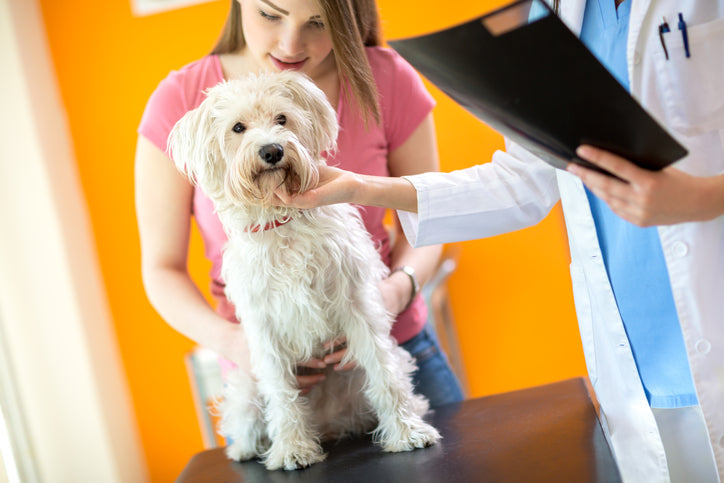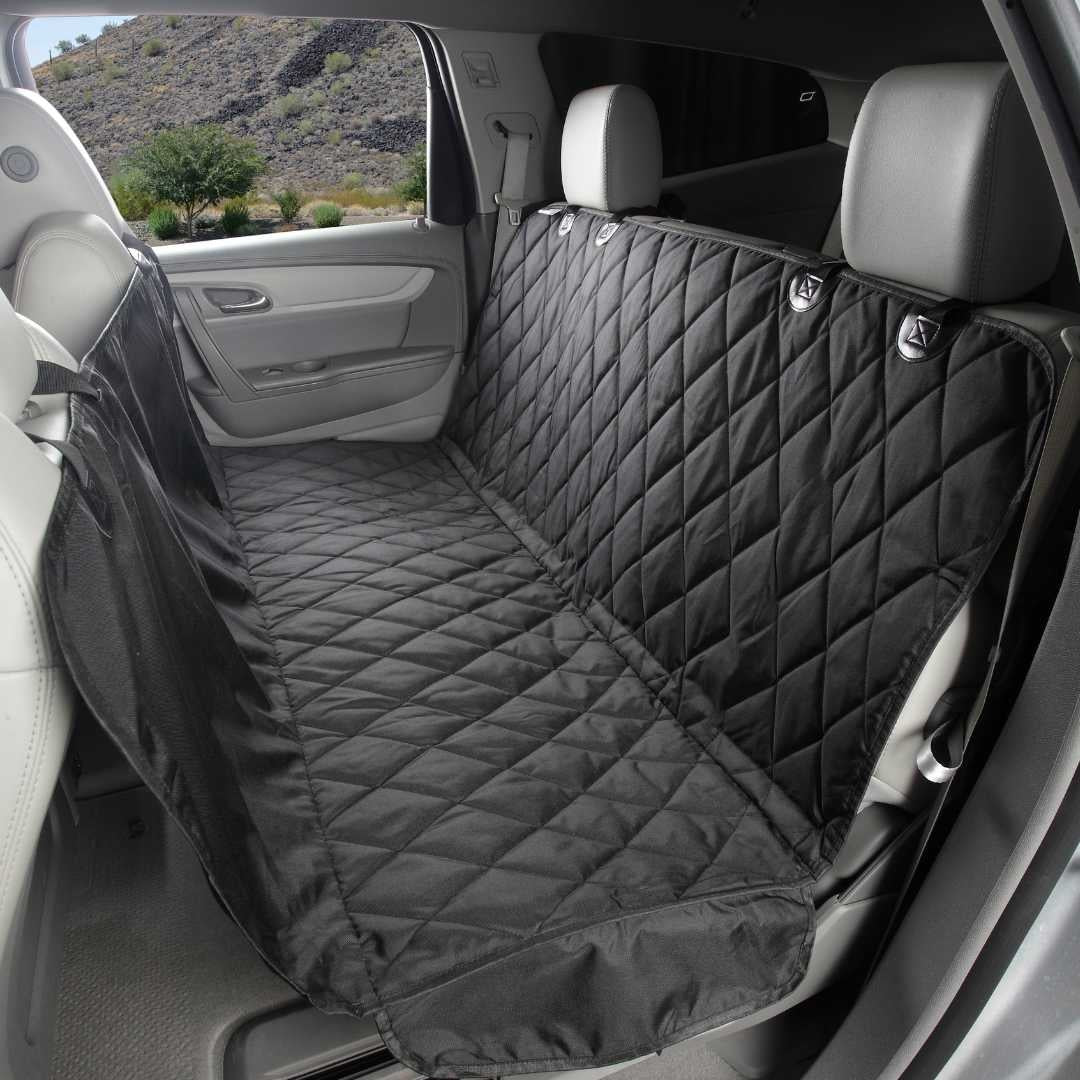How can we tell if our dog has a muscle injury?
In this blog, we will be looking at 6 key pointers that may just change the way you look at your dog and help you to detect muscle issues or injuries quickly.
Injury that causes lameness is obvious and when our dog cries out in pain, we are usually heading to the vet. However, injury can be much more subtle but still have a huge effect on the way our dogs function. If our dog has a small injury, it can easily go unnoticed but will cause subtle changes in their posture and movement.
Have you ever had a twinge in your back or neck that keeps coming back? Knee pain when you do that extra long walk at the weekend?
Well, our dogs experience the same type of things, but how can they tell us? Small injuries may get worse and become evident when our dog stops jumping on the sofa or starts measuring those agility jumps. OR they may just sit there causing long term discomfort.
So here are a few pointers that might give you some clues and hopefully change the way you look at your dog:
1. Mouth and Jaw
Has your dog got tooth pain?
Recently I suffered with a periodontal abscess and wow did it hurt. There wasn’t much to see, only redness around the gum but I was in agony until I visited the dentist and took antibiotics. Many dogs suffer in silence when it comes to their teeth. Dogs rarely get cavities, but are much more prone to gum disease, in turn forming tartar which adheres strongly to the teeth. If not removed, tartar can cause irreversible damage called periodontal disease. It can be very painful and lead to loose teeth, abscesses, and bone loss or infection. Bacteria may even enter the bloodstream and cause infection of the heart valves, liver and kidneys.
So you must be thinking by now what has this got to do with my dog’s muscles?
Well a lot actually; would you believe mouth pain can cause pain in the temporomandibular (jaw) joint, (temporomandibular joint) the neck, shoulders and even the back muscles. There is a bone assembly called the hyoid apparatus which attaches to the inner side of the jaw area. The tongue attaches to the front of the hyoid and muscles run from this delicate structure all the way to the scapula (shoulder blade) and also to the sternum (breast bone). So in effect, our dog’s tongue is attached to the shoulder blade and sternum by muscles. So any pain in the mouth which causes your dog to tense these muscles will tighten the neck and cause restrictions in the shoulder movement. This can be seen as a shortening of the stride and when the stride pattern in the front limbs changes, it creates a chain reaction which can affect the muscles running along your dog’s back. If your dog has ever had dental issues, they are bound to have neck, shoulder and possibly even back pain so it is important to have your dog’s muscles assessed and treated if this has ever happened. Just for your info, the hyoid apparatus can be fractured by choke chains and pulling back aggressively on a dog’s lead!!
2. The Neck
Have you ever suffered with neck pain, radiating down your shoulders giving you a bit of a headache too?
Well, it may surprise you to know dogs can suffer in the same way. Remember when your dog lands from a jump from the sofa or car, the whole of their bodyweight is taken by usually one or the other of their front legs, the concussion of which travels up the leg to the shoulder and neck. Now if your dog has a tight neck, then landing could be uncomfortable, affecting how they land and also their keenness to even take off. Have a look at your dog’s head carriage when they are moving.
Does your dog carry the neck high which could indicate the muscles along the top of the neck are tight, or does your dog have a low head carriage meaning they are having difficulty lifting the head?
Can your dog turn their head easily from side to side?
You can assess this by offering them a treat to their side encouraging them to only stretch their head and neck around to the treat and not moving the whole body.
Can they get the treat easily or do they struggle and try to move around? Also look at your dog’s head as they trot towards you. Do they tilt their head to one side? This is also an indication they may have muscle tension.
Muscle tension, wherever it is, changes your dog’s posture and movement creating even more muscle tension throughout the body. Ideal head carriage should be in a neutral position which means the head and neck are level or only a little higher than the shoulders as they trot. The neck and head should be relaxed, lengthened and free moving not held stiff and concentrated into the shoulders.Try gently feeling the muscles in your dog’s neck. You should feel those muscles under the skin are pliable and soft, NOT hard or tight.
Many muscles originate and insert from the head to the shoulders, so neck pain usually means shoulder pain and if your dog has shoulder pain, what will that do to your dog’s stride length? You got it… it will shorten it. If the front stride length is shortened, then this has a knock on effect tightening the back muscles.
3. The Back
Does your dog twitch, flinch, dip away from your touch when stroking or grooming?
This is not your dog being ticklish, it’s a sure sign your dog has back pain. Trigger points and tight muscles and fascia along the back cause this twitching of the muscles and when this happens your dog will not be comfortable so it’s time to see a therapist. Tight muscles along the top line of your dog’s back will change your dog’s posture and prevent correct movement, putting stresses on the body which can lead to more serious injury. A dog with this kind of pain may still run about, jump on to the sofa and even compete in their given sport. But if you see this kind of twitching in your dog’s muscles, it’s worth knowing that your dog will be compensating and this means at best your dog will be feeling uncomfortable and at worst may be on the way to sustaining more serious injuries to joints, ligament, tendons and muscles. Act quickly and avoid these more serious issues.
4. Coat Kick Ups
This is an interesting one. I see dogs where the coat swirls, changes direction or kicks up in one place. Changes in the soft tissues under the dog’s skin can change the way the coat lies. So if your dog has a really tight muscle in his back for instance, then the coat in that area may stick up or change direction. It can be harder to detect in breeds with very rough coats but watch out for a difference, you may pick up an issue before if affects your dog’s performance.
5. Tail Held to One Side
Your dog’s tail should have a free and easy movement from left to right when moving around. Commonly though, I see a tail that is wagging more to one side rather than wagging equally to both sides. Sometimes the tail is predominantly being held to the left or right. So thinking about the muscles that wag our dog’s tail, we can see that tight muscles can cause uneven tail wagging.
Is this a problem? It’s only the tail after all? Yes it is because the dogs tail is an extension of their spine and is used in movement for balance. If your dog swims then you can really see how they use their tail as a rudder. Imagine if you were on a boat where the rudder only moved to the left!!
6. Just Not Right
Is your dog generally a bit down or lethargic? Perhaps not as enthusiastic or playful as they used to be?
Never think your dog is just getting older so it is to be expected he can’t do the things he used to. It could be something as simple as a minor muscle injury that is holding them back. As a dog ages, we assume arthritis is becoming a factor but this is not always the case. A visit to your guild therapist may just surprise you – it may be a muscular issue as opposed to an orthopaedic one which can greatly benefit from massage therapy.
If any of the above gets you thinking ??? Talk to a Canine Massage Guild Therapist. Guild members have been trained to palpate to specifically look for even the smallest muscle issue. Your dog will be in safe hands and a lot more comfortable after their visit. Now go and have a look at your dog with your new skills and let us know how you get on.
This article was originally posted on Canine Massage Guild website here.
Canine Massage Guild
Just like human massage, dog massage works so well because it is able to resolve soft tissue and muscular problems. Canine Massage Guild boasts the largest network of therapists in the UK. Visit our website at www.K9MassageGuild.co.uk to find your local Therapeutic Canine Massage Practitioner. Whether it’s injury rehabilitation, orthopaedic management, sporting performance enhancement, post operative care or health maintenance we aim to see improvements in just 1-3 sessions.







